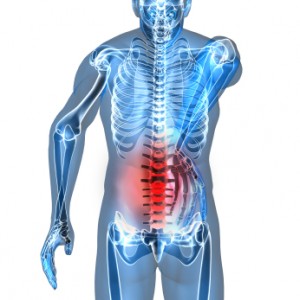An Interview with Dr. Robert Echenberg
After three decades as a traditional gynecologist, Robert Echenberg (Institute for Women In Pain, Bethlehem PA) was given an usual challenge, to develop a chronic pelvic pain program that utilized non-surgical therapies. Little did he know that he would lead a revolution that is changing the way IC and pelvic pain are considered.
Remarkably humble, he freely admits that he and his colleagues knew little about pelvic pain. “When a patient came to our clinic suffering from long-term pelvic pain, we looked for typically Gyn causes, such as endometriosis, fibroids, cysts or sexually transmitted diseases” he said, “Many of these patients had gone through multiple, surgical tests and therapies: ultrasounds, MRI’s, colonoscopies, cystoscopies, laparoscopies and even hysterectomy at a very young age, yet they still would continue with the worst pain.”
He’s now helping to define a new pelvic pain syndrome, Complex Abdominal Pelvic Pain Syndrome (CAPPS), that will have many patients say “That’s me! That’s my life.” If you’ve suffered from a variety of ills associated with the bladder, the bowel, and the reproductive tract, this may explain the connection. It also adds new context for patients who thought that they were having recurring UTI’s or yeast infections, only to be told that no infection was found. Dr. Echenberg and the newest research on chronic pain itself suggest that how our body processes pain messages is a large part
of the problem.
Patients visiting his clinic today, mostly women though he does work with a smaller number of men, range from teens through menopause. They have seen numerous physicians and many were told that it’s “all in their heads.” They may struggle with what he calls the evil triplets: IC, endometriosis and irritable bowel syndrome.
These patients share a common set of symptoms from multiple organs, including:
- the bladder – frequency, urgency, nocturia
- the bowel – diarrhea, constipation associated with IBS
- lower abdominal bloating and pressure
- the vagina – itching, burning and sensitivity
- the vulva – pain, burning and/or itching
- sexual pain (entrance, during and/or after)
- lower abdominal pain
Many women suffer from general vulvodynia, vulvar vestibulodynia and several vulvar skin disorders such as lichen simplex and sclerosis. Pain in the clitoris (clitorodynia) and persistent genital arousal disorder (PGAD) is also seen. Many of his male patients also suffer from aspects of pudendal nerve neuralgias. Pelvic floor dysfunction, a clenching of the pelvic floor, is present in 100% of his patient population.
Overlapping illnesses can also extend far beyond the pelvis. He’s noted that patients can struggle with fibromyalgia, chronic fatigue syndrome, chronic hyperventilation syndrome, dysautonomia, migraines, multiple chemical sensitivities, myofascial pain syndromes, orthostatic hypotension, postural tachycardia syndrome (POTS), TMJ, generalized autoimmune disorders, sleep disorders and restless leg syndrome.
Cumulative Trauma & Strain
 It is the nervous system and muscles in the pelvis which may drive chronic, persistent symptoms. Dr. Echenberg explained “Chronic pain is not just acute pain that lasts longer after acute tissue injury, but is a pathology of its own which develops following cumulative traumas over time.” These traumas can be physical, such as accidents, injuries, surgeries, infections, etc. Mental and emotional traumas also evoke a physical reaction. The strain of long-term stress, financial difficulties, and relationship difficulties add still more negative triggers.
It is the nervous system and muscles in the pelvis which may drive chronic, persistent symptoms. Dr. Echenberg explained “Chronic pain is not just acute pain that lasts longer after acute tissue injury, but is a pathology of its own which develops following cumulative traumas over time.” These traumas can be physical, such as accidents, injuries, surgeries, infections, etc. Mental and emotional traumas also evoke a physical reaction. The strain of long-term stress, financial difficulties, and relationship difficulties add still more negative triggers.
He continued “These are cumulatively remembered, chemically, in our nervous and muscle systems. The longer these traumas or triggers persist, the more the body reacts in a fight or flight mode which often results in a continuing vicious cycle of clenching, pain and stress.” As a result, muscles become tight, dysfunctional and often painful. In the pelvic floor, tight muscles can make it difficult to empty your bladder, bowels and enjoy intimacy. Tight muscles also limit blood flow to the organs and can squeeze nerves, resulting in nerve entrapments.
The reaction of our nervous system to chronic injury and stress is well documented. Nerves become more sensitive and easy to trigger. Pain responses can be magnified where even the softest touch can provoke extreme pain, perhaps driving the constant, chronic vulvar or prostate discomfort seen in chronic pelvic pain patients. It’s not unusual for chronic pain patients to have very sensitive skin, a sensitive sense of smell, food, drug and multiple chemical sensitivities.
Pain specialists around the globe are now focusing on turning down the overall volume of pain by treating any and all conditions which are contributing to pain and discomfort. Any existing medical conditions (i.e. IC, IBS, etc.) should be treated, whenever possible. Patients must learn to relax muscles to break the cycle of clenching (i.e. pelvic floor dysfunction). Patients and providers are encouraged to address any other stressors which can be adding to the strain (i.e. anxiety, depression, stress, etc.).
Dr. Echenberg is seeing positive results. Patients visiting his clinic have a long, initial visit which can take up to three hours. They are taught about chronic pain and to document cumulative traumas. He does a thorough pelvic exam to “visualize the pelvis” and determine which organs and structures are triggering pain.
Significant barriers to care are medical care providers who lack the knowledge to make a complete diagnosis. He said, “The challenge is that doctors do not visualize the entire pelvis, including the nerves, blood vessels, muscles, ligaments and bone. There are many structures that could be contributing to pelvic pain. If a physician does a traditional bimanual exam, they commonly cannot discriminate where the pain is coming from.”
“The challenge is that doctors do not visualize the entire pelvis, including the nerves, blood vessels, muscles, ligaments and bone. There are many structures that could be contributing to pelvic pain.”
Patients are often unaware of the sheer size of the muscles. The psoas is a thick muscle that extends from the hip to above the diaphragm. When it goes into spasm, it can cause terrible pain that can lead a patient to seek help at an Emergency Room. Nerves originating from the sacrum (S2, S3, and S4) may also be part of the problem. To assess these, he looks at pain patterns in the inner thighs, vulva, and vestibule. He will touch the base of the bladder via the vagina (women) and rectum (men) where he often finds exquisite sensitivity. A simple touch may trigger urinary urgency and a sensation of sexual pain.
Many of his new pelvic pain patients don’t realize that the bladder is a source of their discomfort. They question why he wants to know about their bladder habits. When he shares that an average healthy bladder only voids four to six times in a day, most understand that what they thought was normal bladder behavior (i.e. urinary frequency) is anything but.
After the assessment, patients are given a customized treatment program to treat “all” of the pain generators, such as IC, PFD, endometriosis, vulvar skin issues, orthopedic issues, anxiety, depression, stress and others.
Bladder Therapies – Breaking a Vicious Cycle of Inflammation
When the bladder lining is damaged, urine enters more deeply into the bladder wall where it triggers a vicious cycle of inflammation. Mast cells release histamines which irritate the nerves in the bladder wall. They, then, release an irritating nerve factor, Substance P, which triggers more mast cell release.
His goal with bladder treatment is to break that vicious cycle using a three pronged approach to treatment, including a bladder coating (Elmiron), an antihistamine (Hydroxyine) and a low dose antidepressant (Elavil). He said “I’ve found Elmiron to be extremely safe and effective for maintaining bladder health for the longer haul. It takes roughly three to six months to take effect. Unfortunately, people try it for a few months and then stop without giving it a reasonable chance.”
He uses bladder instillations, specifically either his own simple “cocktail” of Elmiron, Lidocaine, and Bicarbonate, or a new prepackaged product from “Innovative Compounding” in Atlanta, GA (called Vesicyst) in most of his newly diagnosed IC patients for more immediate relief of urgency and pain. These instillations are commonly used intermittently, of course, for IC flares.Patients can be taught to use them at home as well.
 He strongly encourages patients to modify their diet, avoid acidic foods, and suggests the use of Prelief, an OTC supplement, to help reduce acid irritation. “Many of my patients tell me they don’t travel anywhere without their Prelief,” he offered. Adequate water intake to keep urine dilute, and the
He strongly encourages patients to modify their diet, avoid acidic foods, and suggests the use of Prelief, an OTC supplement, to help reduce acid irritation. “Many of my patients tell me they don’t travel anywhere without their Prelief,” he offered. Adequate water intake to keep urine dilute, and the
patient well hydrated, is also important.
Treatment Outcomes
Tens of millions of men and women struggle with pelvic pain worldwide. In his recent webcast, Dr. Echenberg reported that roughly 30 million women in the US and an undetermined number of men experience general, chronic pelvic pain. His own experience and that of researchers in the field is that the bladder related
Tens of millions of men and women struggle with pelvic pain worldwide. In his recent webcast, Dr. Echenberg reported that roughly 30 million women in the US and an undetermined number of men experience general, chronic pelvic pain. His own experience and that of researchers in the field is that the bladder related pain syndromes account for at least one of the major “triggers” in over 80% of these sufferers. The good news is that with early intervention and treatment patients respond well to therapy.
The clear challenge, however, are those patients who have struggled with multiple conditions and perhaps developed a prolonged, complex regional pain syndrome. These patients and their providers must focus on treating all of the pain generators, including the pelvic floor, the bowel, the vulva or prostate, etc. He said “If you’re not treating the others, the IC becomes much more difficult to treat effectively.”
Watch his ICA webinar at: https://www.brighttalk.com/webcast/9263/68467
Learn more about Dr. Echenberg by visiting his website: http://www.instituteforwomeninpain.com
Institute for Women in Pain
623 W. Union Blvd, Suite 5
Bethlehem, PA 1801

